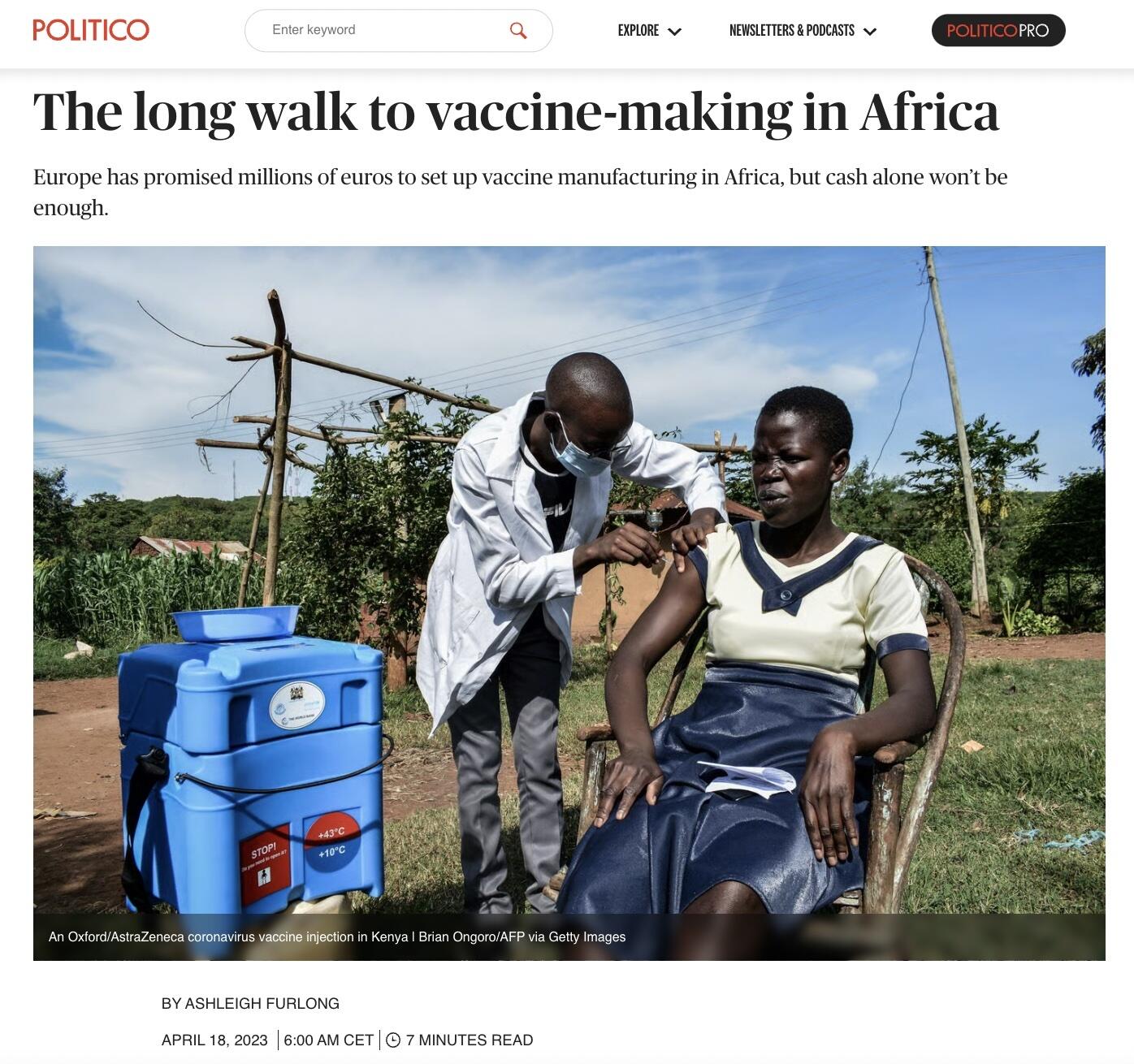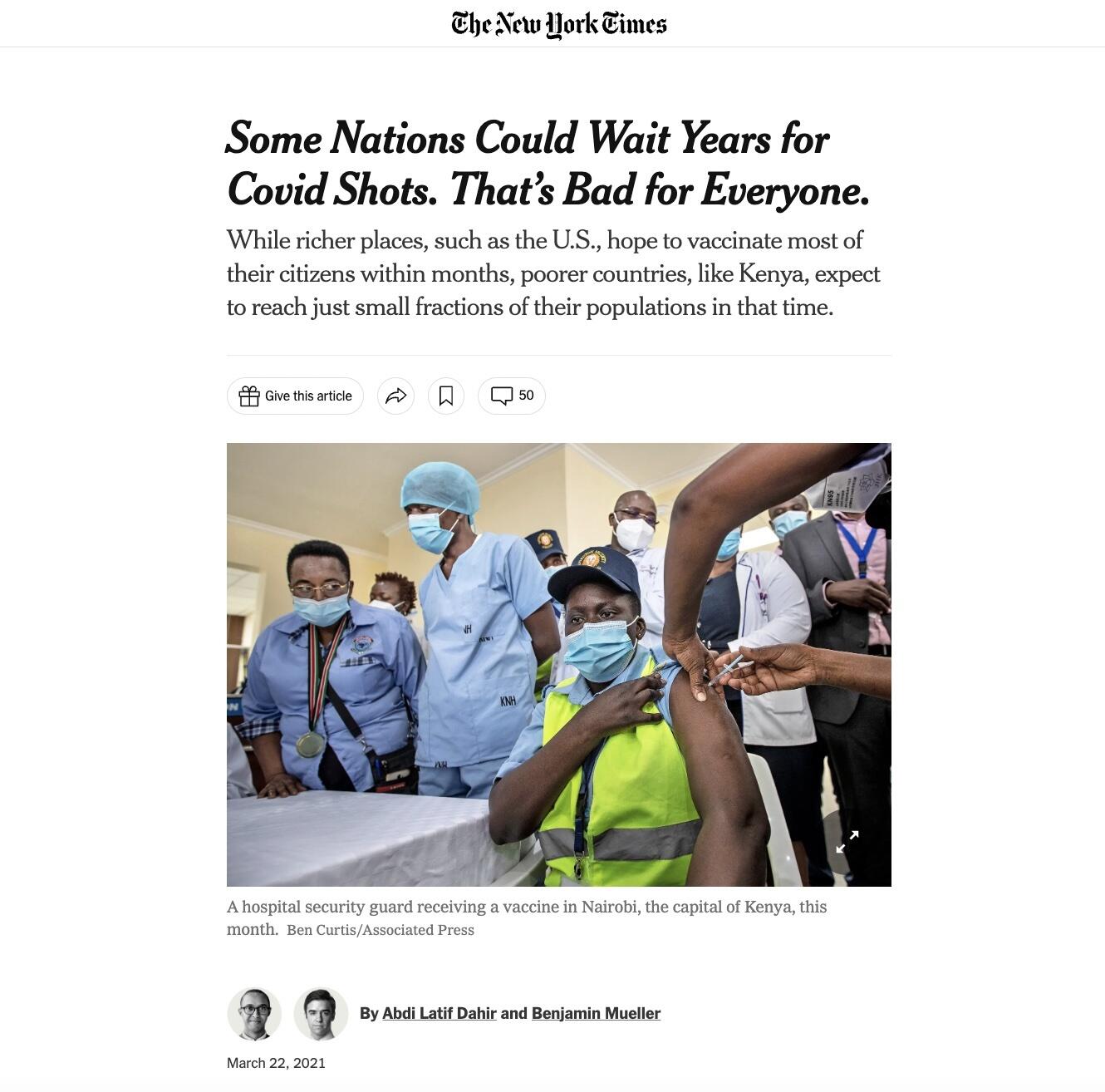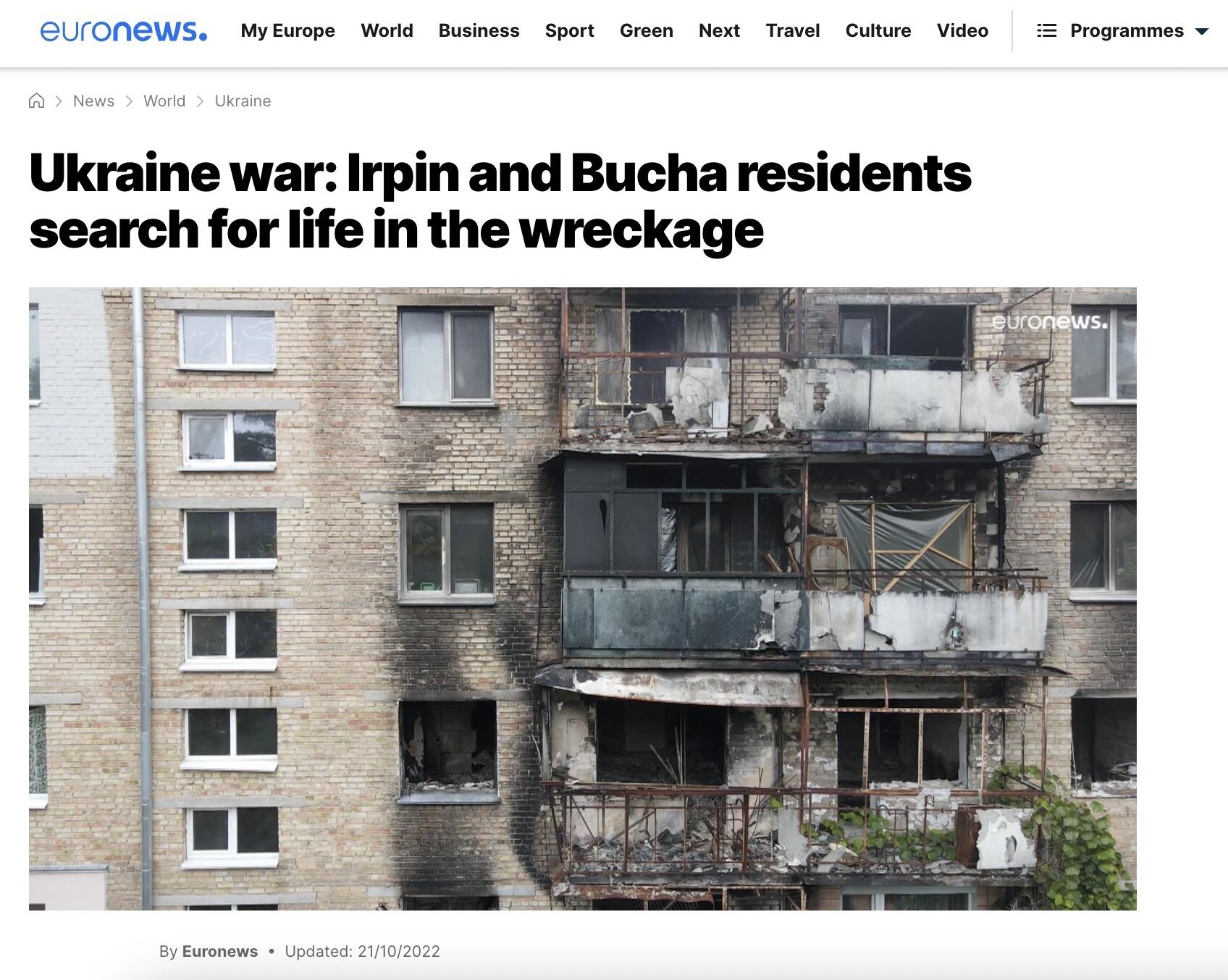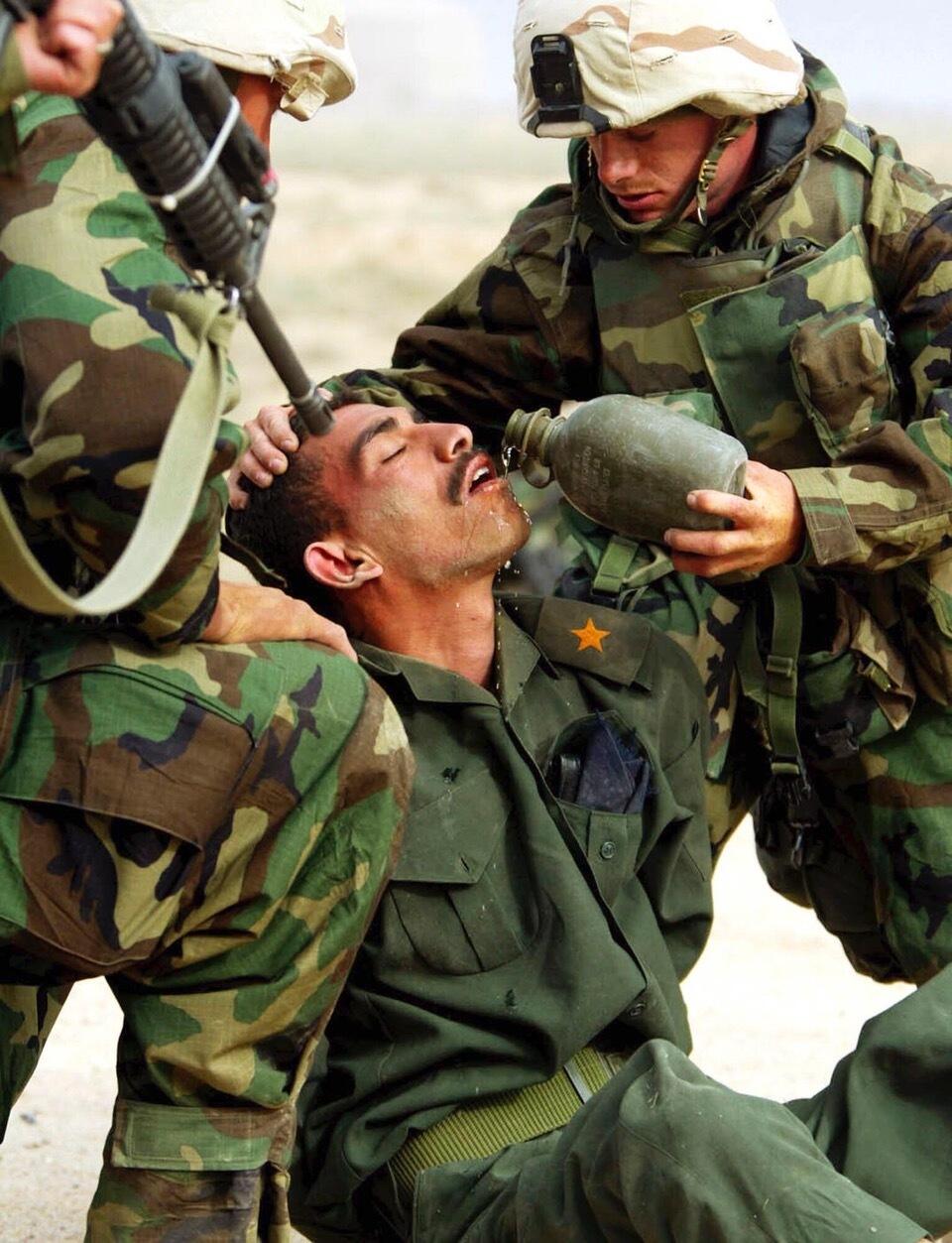Introduction
“Quick! We need to get this story out fast. What pictures do we have to go with it?” This is a quite common newsroom situation many journalists can probably relate to. But in the “online first” era, it’s a paradoxical scenario. On the one hand, journalists publishing on websites and social media platforms, such as Instagram, Tik Tok and YouTube, rely heavily on images to tell their stories. On the other hand, the pressure to have fast and frequent publication rates on news websites and on social media platforms often leaves media professionals in newsrooms little time to make important decisions about the images they use.
In fact, the amount of time journalists and editors devote to selecting pictures for their stories is often greatly unproportional to the impact these have on the audience.
Images are the entrypoint to stories:
They might determine whether or not you click on an article (1).
They add meaning to a story and increase its perceived veracity (2).
If not carefully chosen, they can confuse the audience (3).
They can literally affect people’s physiological state (4), emotions (5) and memory (6).
What can reporters, photojournalists and editors do to ensure that picture selection and framing are done responsibly and constructively?
In this article of the Bonn Institute’s “Psychology for Journalists” series, you will get:
- the basics of how images are processed in the brain.
- real examples to illustrate why images are a powerful tool and why journalists need to be careful and accountable in the way they use pictures.
- a list of good practices for selecting and framing images in your stories.
Even though the power of images applies to all types of media, in this article we focus mainly on print and online journalism. Many of the same principles apply and should be taken into consideration for video journalism as well.
How the brain processes pictures
Scientists are still investigating exactly how the brain processes visual information — and some of the current hypotheses are controversial (e.g. 7). But we do have a basic understanding of the mechanics:
- First, visual stimuli is received by specific eye cells, called photoreceptors, which convert light into electrical signals that are then sent to the brain (8).
- These signals are then processed. The recognition of the objects or other stimuli occurs by comparing visual stimuli with information already stored in the brain. For instance, people recognize even extremely simplified cartoon figures as the animals they are meant to be (9).
- Through a straight interconnection of brain regions, one of the areas that interacts with content of visual perception is the amygdala, specially relevant for emotional processing (10).
But, while neurotypical brains might process the images in the same way biologically, the interpretation of those images is far from "universal". Individual past experiences influence neural processing. For example, some images — such as one of a huge dog — might elicit joy and excitement in some people, while it might be fear-provoking for others. In a similar way, images of objects from one culture or community may only be understood as intended by persons who are familiar with the respective concepts. A picture showing someone wearing emblems of a particular subculture may be loaded with meaning and sympathy/antipathy by those who recognize their code (e.g. subtle symbols in jewellery, ways to wear a cap, specific colours, special tattoos) while being rather meaningless to people who have no knowledge of that subculture and its “language”.
Why are images so powerful?
Images are quite immediate
Humans can process an image in the blink of an eye — literally. An MIT study from 2014 found that people can identify an image in as fast as 13 milliseconds (11).
Journalists need to take this into account very consciously: people might decide not to read an article, or tune out the radio, but they won’t be able to unsee images that are published — be it in the newspapers, websites, or social media.
Images impact emotions faster and more powerfully than words
Some studies suggest that there are separate neural networks for processing “pictorial and verbal displays of emotion” (12) and that visual stimuli are processed more rapidly by the brain than words (e.g. 13 and 14).
As we said before, when we "see" an image, it's not just the visual cortex that's involved. The brain region for emotional processing is also activated. The amygdala, for example, is “considered the single most important region of interest in the brain when considering the impact of visual images on fear, anxiety, and pain” (15). In addition, images can trigger physiological reactions, such as a rise in heart rate and blood pressure, sweaty palms, or even an upset stomach (4).
Many studies have found that negative visual stimuli, e.g. depicting violence or fear, elicit a stronger emotional response than positive examples, such as showing joy or love (12) (you can read more about negativity bias in Part 1 of this series).
But journalists need to be aware that negative images can lead to post-traumatic stress — not only for those who've experienced similar situations, but also for the audience who only witnesses the events via the news and for the journalists reporting on them. More on this in the section “One additional note: traumatization”.
In addition, more recent studies suggest that social media posts with positive images (compared to negative ones) might elicit higher levels of visual attention and “higher intentions to click and share” (16).
Images are more memorable
People are more likely to remember information presented in the form of pictures or images than information presented in text. This is called the Picture Superiority Effect (6) and it happens because:
1) pictures are more likely to use both visual and verbal channels in brain encoding (so-called dual-coding), which increases ease of recall (17).
2) relative to text, images have more unique and more distinctive visual features (distinctiveness model) (18).
In addition, images seem to elicit stronger affective and engagement responses (5), which, in turn, seems to boost remembering (19).
Ease of recalling information is greatly relevant for journalism, because news helps people make sense of the world and make informed decisions — and these two effects rely in part on memory. That is why, many times, when less tangible information needs to be presented, journalists utilise graphics and infographics. One example is the 2023 Pulitzer Prize for Illustrated Reporting and Commentary. Mona Chalabi, contributor in The New York Times, received it for a set of illustrations "that combine statistical reporting with sharp analysis" to help readers understand the immense wealth of Amazon founder Jeff Bezos. On the website of the Pulitzer Prizes, you can find some of the illustrations — and here you can read the New York Times’ article.
Images enhance "truthiness"
Finally, pictures also add to the perceived “truthiness” of a statement (2): In corresponding experiments, participants are asked to rate several trivia claims on lesser known topics as true or false (e.g. “giraffes are the only mammals that can’t jump”). When the claims are shown with a semantically-related photo — e.g. of grazing giraffes, — they are more likely to be rated as true, although the photo does not provide any additional information relevant to the question at hand.
The effect is usually explained by feelings of higher processing fluency that are falsely attributed to familiarity with the claim (2; see part 1 of this series on the availability heuristic and the illusory truth effect).
Given the important impact images have on people, there are some aspects journalists need to be particularly careful about when it comes to working with visual information. We are going to expand on two: picture selection and framing.
Picture selection
Because pictures are becoming a more and more essential element in all kinds of journalism, picture selection should not be taken into consideration at the last minute or seen as secondary.
One important aspect that journalists and editors should be very sensitive about when it comes to the usage of imagery is representation.
If some things are rarely represented, it is almost as if they don’t exist or are not possible. On the other hand, if information is highly available in memory, it leads people to believe that those examples are more probable than they actually are (see Part 1 of this series). Greater diversity in representation will contribute to a more accurate worldview.
Consider the two following pictures, which were used to illustrate Kenya’s COVID vaccination efforts. The first article is about Africa in general.
Both images are depicting scenes in Kenya, both were pulled from agency databases. In the first one, the woman getting the shot is sitting out in the open, in what appears to be a rural setting, while the second shows staff at a hospital. Even though this might seem an outdated example, unfortunately it is not: Many African countries are still portrayed mainly through rural contexts, which leave out the progress and urban richness that exist. Is the first picture false? No. Does it help to tell the whole story? Also no. Rather, the question arises as to why this image of a vaccination in the open was chosen, as this is not apparent from the title and teaser, nor from the content of the text (which was written in South Africa).
It is important that journalists don't fall into the trap of using stereotypical images (e.g. portrayals of misery, poverty and conflicts for places like Africa) when looking for pictures to illustrate a generic topic, but rather consider bringing other contexts to light.
Some African journalists are developing projects that move the needle of imagery to more diversified grounds. The Republic, a Nigerian magazine of “serious journalism from an African worldview” (in their own words) includes reporting on science & technology, culture & society and climate change; the startup Egab empowers journalists across the Middle East and Africa to publish local “inspiring stories”, as they call them, in regional and international outlets.
The need for constructive and diverse images is not just about specific regions of the world. Imagine you are writing about people going back to their homes after war. What kind of pictures would you choose for your story? Maybe you would (naturally) include a depiction of debris and destroyed buildings, as the one below.
But what if you also included images of hope for the future? The following two frames are from a documentary about the return of a mother and son to their home in Irpin, Ukraine, in June 2022, after spending almost three months in Portugal, where they took refuge when the war started (documentary and multimedia work by Catarina Santos, Diogo Ventura and team, from Observador, one of the largest Portuguese online media outlets).
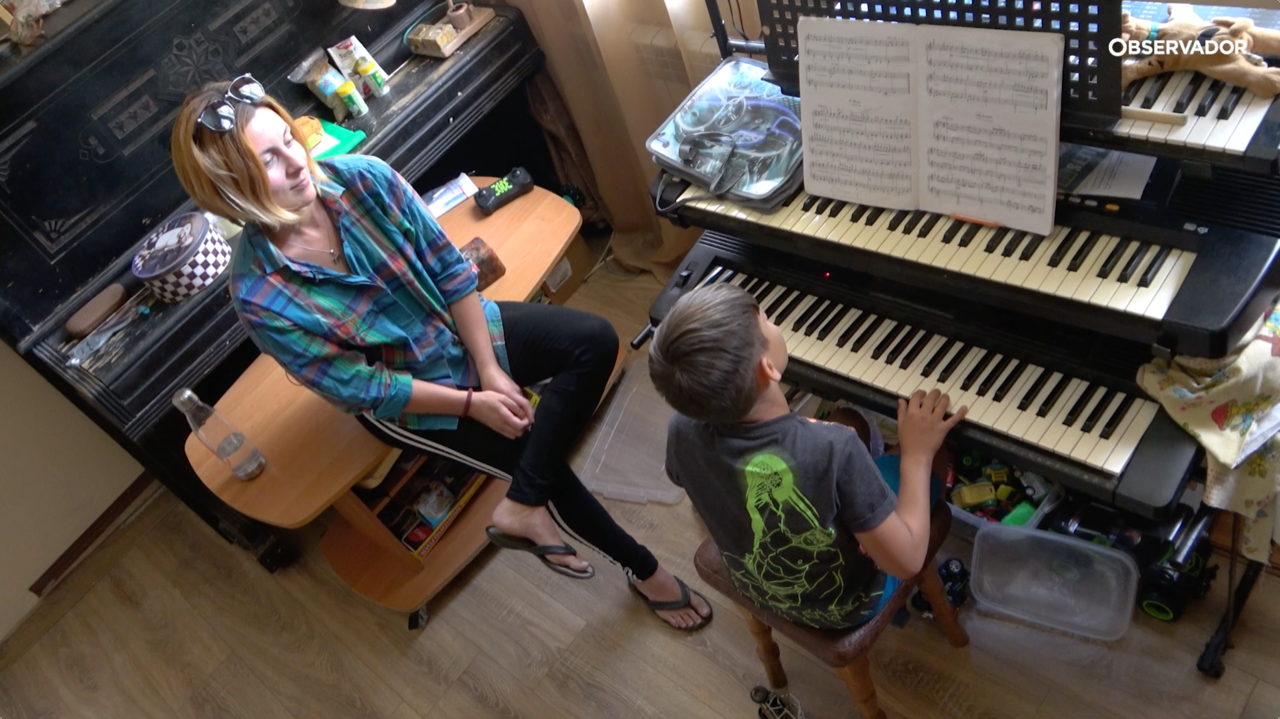
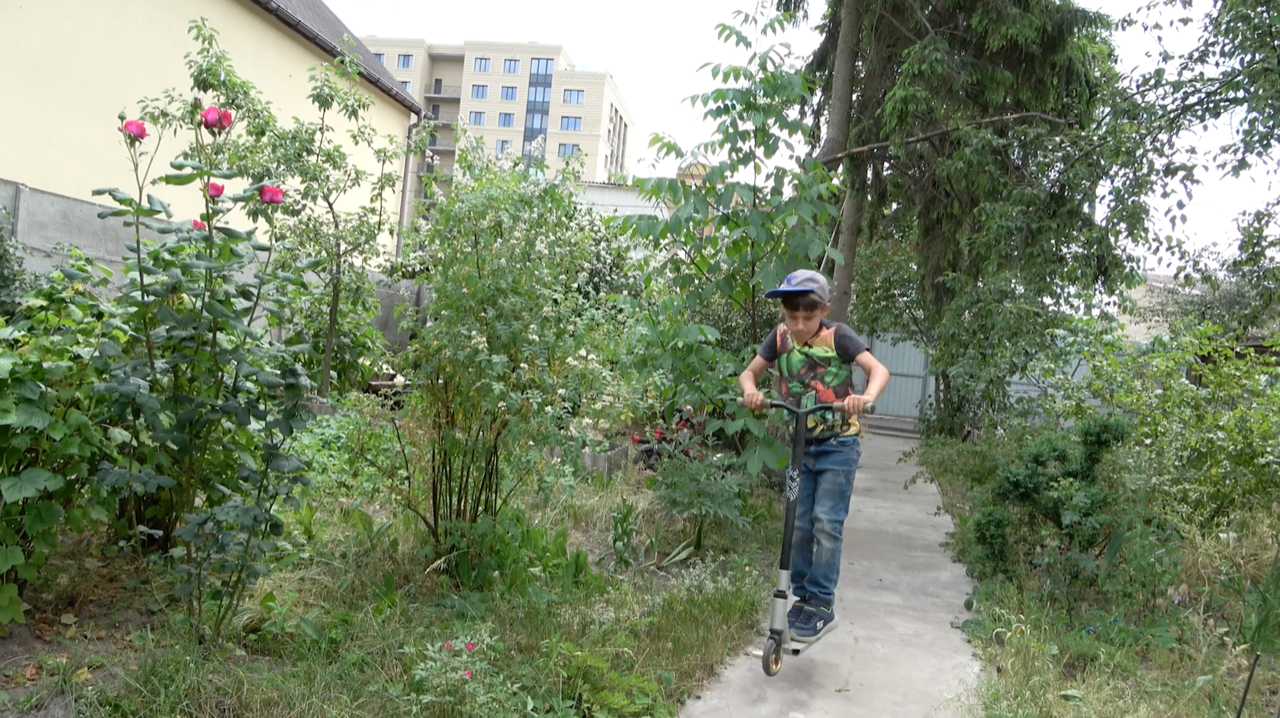
Since images are especially engaging (5), constructive picture selection goes hand in hand with solutions journalism, which has been shown to make people feel better and more engaged than problem-focused reporting (20).
More newsrooms are tapping into this: A study from 2018 showed that only 63% of the solutions articles analysed were accompanied by images that portray solutions (3). Another study on the same topic from 2019 found solutions images in 85% of the solutions articles (20).
In the tools section in this article, you will find concrete tips to achieve this goal.
Framing in news images
Choosing more constructive images is just part of the solution. As Susan Sontag, a renowned US-American thinker and activist who wrote many essays on photography, says in her book Regarding the Pain of Others: “The photographic image […] is always the image that someone chose; to photograph is to frame, and to frame is to exclude” (21, p. 39).
Framing in news photography can change the interpretation of an event. Take for example this image of an Iraqi soldier with two US-American soldiers by his side, captured during the Iraq war in 2003 by Itsuo Inouye, for the Associated Press.
Depending on how the image is cropped, the narrative changes completely: if we only leave the left-hand side visible, all we see is an US-American soldier pointing a gun at an Iraqi soldier’s head; if only the right-hand side is visible, we see an US-American soldier giving water to the Iraqi man. Neither of these framings tells the whole story and it would be deceitful to use either of them exclusively.
That is exactly what Ursula Dahmen (Der Tagesspiegel) tried to convey when she created a montage with this photo for the exhibition “Bilder, die lügen” (“Pictures that lie”), developed in cooperation with the foundation of Haus der Geschichte der Bundesrepublik Deutschland (House of History of the Federal Republic of Germany), in Bonn, Germany.
However, oftentimes there’s no way for us to see “the whole picture”. Sometimes the cropping has already been done on the spot — by the photographer who took the picture. The image in this article’s “cover” by Tim Stadie — framing during a rally — is a good illustration of that.

Constructive journalism advocates for richness of perspectives: if many viewpoints are included, it is more likely that the world is portrayed in its complexity, avoiding oversimplification or misleading foci, and making space for different responses.
Framing can also be about putting information in context for a deeper, more thorough look at reality. One good example is that of the update in the weather segment of the daily news on French TV channels 2 and 3. Since March 2023, the segment has been called “Météo Climat”. The idea is to put the daily meteorologic information in the context of climate change. There is a screen showing a coloured scale with the evolution of temperature over a certain period of time; graphics are used depending on the topic of the day; and there is a short video with an expert answering viewers’ questions.
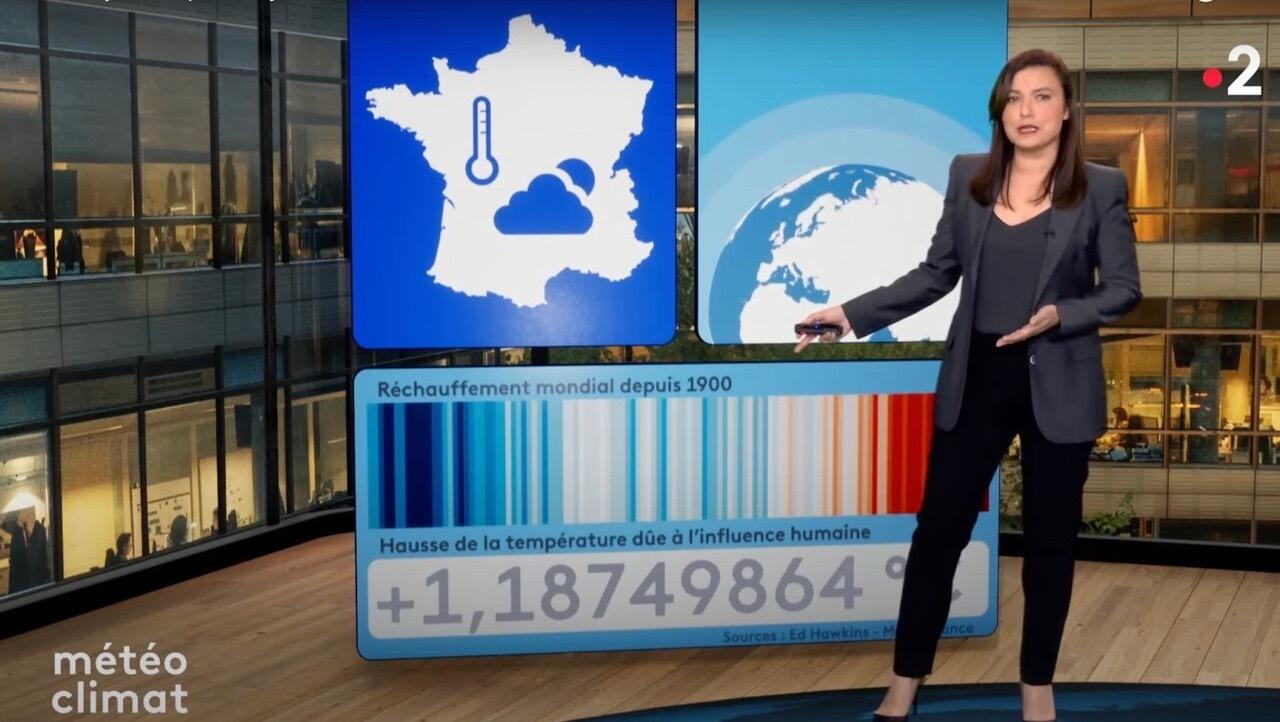
An additional note: traumatisation
As we have already talked about, images are so powerful that they can provoke strong physical reactions. One special situation is that of post-traumatic stress related to exposure to news about disturbing events, such as war, terrorist attacks, pandemic or other serious health issues, interpersonal violence, or natural disasters (22).
Some of the symptoms of post-traumatic stress include, for example, thinking about the situation very frequently; having intrusive thoughts that disturb normal daily functioning; uncontrollably reliving the experience in so-called flashbacks, as caused by revisiting places, pictures, readings associated to the event; feeling hopeless, anxious, depressed and/or tired most of the time; not finding joy in things that used to be found joyful (22; also see The Self-Investigation, a nonprofit dedicated to journalists’ mental health and well-being).
It is clear that journalists need to be mindful, in their reporting, of those who were directly affected by the traumatic event (or experienced similar ones). What might be surprising is that similar symptoms of post-traumatic stress, anxiety and fatigue can occur “just” by following media coverage of potentially traumatising events in an intense manner.
Several studies have shown that post-traumatic stress can even be more severe in some cases among those who weren’t directly exposed to the events (23), as for instance the 9/11 terrorist attacks or to the COVID-19 pandemic (24), because repetitive media coverage brings it into people’s homes over and over again, eventually resulting in so-called vicarious or secondary traumatization.
What can journalists do to mitigate the effects of post-traumatic stress in the audience brought on by pictures?
- Include warnings before showing disturbing imagery, or, in the particular case of online media, blur/pixelate images and make them available only if the user requests (25).
- Balance images of suffering with images that convey hope or actions that people can take to overcome the situation at hand.
- Provide information on mental health resources in the reporting (e.g. help lines, support organisations, self-help material developed by professional associations).
Tools and tips
Some good practices in picture selection and framing for journalists and editors:
- Consider visuals from the beginning. Start by defining a workflow for the inclusion of images in your publication roadmap.
- Use photos specifically captured for the story at hand. If you’re working with a photographer, share ideas from the beginning, and define guidelines or create a concept together. Research shows that when photos are taken specifically for a story, the reporting is likely to be perceived as more precise (3). You might also work with a designer or a programmer, if you’re going to use images of another nature, such as diagrams, illustrations, graphics.
- If you are planning on using stock photos or pictures from an agency database:
- Here, too, check early on whether and what visual material is available — not just when the article is finalised — and think about the visuals when creating the text.
- Allow enough time to find the right picture. Visual information professionals stress that choosing the proper picture can take some time.
- Make sure the meaning is clear, not vague. Also, think very carefully about when and how to use abstract pictures; they may be confusing or difficult to make sense of, leaving the audience poorly informed.
- Don’t add confusion by using a picture from a location/community/time of the year that doesn’t correspond to where/when your story takes place. - Be mindful of selecting pictures that convey the same tone as your story. If the image illustrates the problem (rather than the solution) that will likely be the message retained by the audience.
- Try to include more than one picture, in order to represent as many nuances as possible. Try to find a balance between images of problems and solutions.
- Images should engage the audience emotionally. Refrain from using a picture as a mere illustration of the issue.
- Stimulate humanization. Focus on individuals, human interaction, emotional moments. Choose diverse images that depict humans in their complexity and avoid oversimplification or clichés. Avoid victimisation; instead, consider showing persons affected by negative events as active agents (25; also see “The power of language”, Part 2 of this series).
- In climate coverage, pictures of solutions or alternatives tend to evoke stronger feelings of hopefulness and self-efficacy — preventing the sense in the audience that there is nothing they can do (27). Also, avoid associating extreme climate events with positive images, for example, accompanying stories about heat records with people joyfully swimming in the sea. (Find more about fostering the feeling of being able to make changes in article 8 dedicated to self-efficacy and climate reporting.)
- In war zones, when considering constructive visual material:
- Take time to question the purpose of the picture you’re selecting (why that one and not another?); choose a concrete and powerful image; and consider the impact it might have (25).
- Include information on mental health resources related to post-traumatic stress.
The power that images hold is not just an intrinsic trait — it is also a tool that journalists can harness and should be accountable for. Journalists have the power to determine how the world is depicted in the news. Journalists have the power to avoid portraying others “only as someone to be seen, not someone (like us) who also sees”, as Susan Sontag powerfully puts it (21) in regard to imagery of conflicts in certain parts of the world. After all, we would all want our stories to be represented respectfully and carefully. Using images in a constructive way is aligned with and reinforces people-friendly, constructive reporting.
Further exploring
- Regarding the pain of others, book by Susan Sontag.
- How to see the world, book by Nicholas Mirzoeff.
- Ways of Seeing, by John Berger, both a 1972 TV series aired on BBC and a book published the same year with the same title.
- How Diversity in Medical Illustrations Can Improve Healthcare Outcomes, TedTalk about the impact of the inclusion of black illustrations in medical textbooks, by Chidiebere Ibe, a Nigerian Medical Illustrator known for the famous illustration of a black pregnant woman with a black foetus.
You can find more articles on the series "Psychology for Journalists" on this page.
References
- Vafeiadis, M., Han, A., & Shen, F. (2020). News Storytelling Through Images: Examining the Effects of Narratives and Visuals in News Coverage of Issues. International Journal of Communication, 14, 4364-4384.
- Newman, E. J., Garry, M., Unkelbach, C., Bernstein, D. M., Lindsay, D. S., & Nash, R. A. (2015). Truthiness and falsiness of trivia claims depend on judgmental contexts. Journal of Experimental Psychology: Learning, Memory, and Cognition, 41(5), 1337–1348.
- Lough, K., & McIntyre, K. (2019). Visualizing the solution: An analysis of the images that accompany solutions-oriented news stories. Journalism, 20(4), 583–599. https://doi.org/10.1177/1464884918770553
- Bernat, E., Patrick, C. J., Benning, S. D., & Tellegen, A. (2006). Effects of picture content and intensity on affective physiological response. Psychophysiology, 43(1), 93–103. https://doi.org/10.1111/j.1469-8986.2006.00380.x
- Yadav, A., Phillips, M. M., Lundeberg, M. A., Koehler, M. J., Hilden, K., & Dirkin, K. H. (2011). If a picture is worth a thousand words is video worth a million? Differences in affective and cognitive processing of video and text cases. Journal of Computing in Higher Education, 23, 15–37. https://doi.org/10.1007/s12528-011-9042-y
- Paivio, A., & Csapo, K. (1973). Picture superiority in free recall: Imagery or dual coding? Cognitive Psychology, 5(2), 176–206. https://doi.org/10.1016/0010-0285(73)90032-7
- Grill-Spector, K., & Kanwisher, N. (2005). Visual recognition: as soon as you know it is there, you know what it is. Psychological science, 16(2), 152–160. https://doi.org/10.1111/j.0956-7976.2005.00796.x
- Lee, J. Y., Care, R. A., Della Santina, L., & Dunn, F. A. (2021). Impact of Photoreceptor Loss on Retinal Circuitry. Annual review of vision science, 7, 105–128. https://doi.org/10.1146/annurev-vision-100119-124713
- Becker-Carus, C., & Wendt, M. (2017). Allgemeine Psychologie: Eine Einführung [General Psychology: An Introduction]. Berlin, Heidelberg: Springer.
- Ousdal, O. T., Andreassen, O. A., Server, A., & Jensen, J. (2014). Increased amygdala and visual cortex activity and functional connectivity towards stimulus novelty is associated with state anxiety. PloS one, 9(4), e96146. https://doi.org/10.1371/journal.pone.0096146
- Potter, M. C., Wyble, B., Hagmann, C. E., & McCourt, E. S. (2014). Detecting meaning in RSVP at 13 ms per picture. Attention, perception & psychophysics, 76(2), 270–279. https://doi.org/10.3758/s13414-013-0605-z
- Feng, C., Gu, R., Li, T., Wang, L., Zhang, Z., Luo, W., & Eickhoff, S. B. (2021). Separate neural networks of implicit emotional processing between pictures and words: A coordinate-based meta-analysis of brain imaging studies. Neuroscience and Biobehavioral Reviews, 131, 331–344. https://doi.org/10.1016/j.neubiorev.2021.09.041
- Azizian, A., Watson, T. D., Parvaz, M. A., & Squires, N. K. (2006). Time Course of Processes Underlying Picture and Word Evaluation: An Event-Related Potential Approach. Brain Topography, 18(3), 213–222. https://doi.org/10.1007/s10548-006-0270-9
- Walker, M., Ciraolo, M., Dewald, A., & Sinnett, S. (2017). Differential processing for actively ignored pictures and words. PLoS ONE, 12(1), Article e0170520. https://doi.org/10.1371/journal.pone.0170520
- Nanda, U., Zhu, X., & Jansen, B. H. (2012). Image and emotion: from outcomes to brain behavior. HERD, 5(4), 40–59. https://doi.org/10.1177/193758671200500404
- Keib, K., Espina, C., Lee, Y.-I, Wojdynski, B. W., Choi, D., & Bang, H. (2018). Picture this: The influence of emotionally valenced images, on attention, selection, and sharing of social media news. Media Psychology, 21(2), 202–221. https://doi.org/10.1080/15213269.2017.1378108
- Paivio, A. (1986). Mental representations: A dual coding approach. Oxford University Press.
- Mintzer, M. Z., & Snodgrass, J. G. (1999). The picture superiority effect: Support for the distinctiveness model. The American Journal of Psychology, 112(1), 113–146. https://doi.org/10.2307/1423627
- Sharot, T., Delgado, M. R., & Phelps, E. A. (2004). How emotion enhances the feeling of remembering. Nature neuroscience, 7(12), 1376–1380. https://doi.org/10.1038/nn1353
- Midberry, J., & Dahmen, N. S. (2020). Visual Solutions Journalism: A Theoretical Framework. Journalism Practice, 14(10), 1159-1178. https://doi.org/10.1080/17512786.2019.1689371
- Sontag, S. (2004). Regarding the pain of others. Penguin Books.
- Kellerman, J. K., Hamilton, J. L., Selby, E. A., & Kleiman, E. M. (2022). The Mental Health Impact of Daily News Exposure During the COVID-19 Pandemic: Ecological Momentary Assessment Study. JMIR mental health, 9(5), e36966. https://doi.org/10.2196/36966
- Houston, J. B. (2009). Media Coverage of Terrorism: A Meta-Analytic Assessment of Media Use and Posttraumatic Stress. Journalism & Mass Communication Quarterly, 86(4), 844–861. https://doi.org/10.1177/107769900908600408
- Holman, E. A., Garfin, D. R., & Silver, R. C. (2014). Media's role in broadcasting acute stress following the Boston Marathon bombings. Proceedings of the National Academy of Sciences of the United States of America, 111(1), 93–98. https://doi.org/10.1073/pnas.1316265110
- Heinrichs, E., Ehrenberg, K., & Tillmann, P. (2022). Zwischen Wunsch und Wirklichkeit: Konstruktiver Journalismus in Kriegszeiten. Bonn: Bonn Institute.
- MacDonald, J. B., Hodgins, G., Saliba, A. J., & Metcalf, D. A. (2023). Journalists and depressive symptoms: A systematic literature review. Trauma, Violence, & Abuse, 24(1), 86-96
- Carlson, J. M., Kaull, H., Steinhauer, M., Zigarac, A., & Cammarata, J. (2020). Paying attention to climate change: Positive images of climate change solutions capture attention. Journal of Environmental Psychology, 71, Article 101477. https://doi.org/10.1016/j.jenvp.2020.101477

